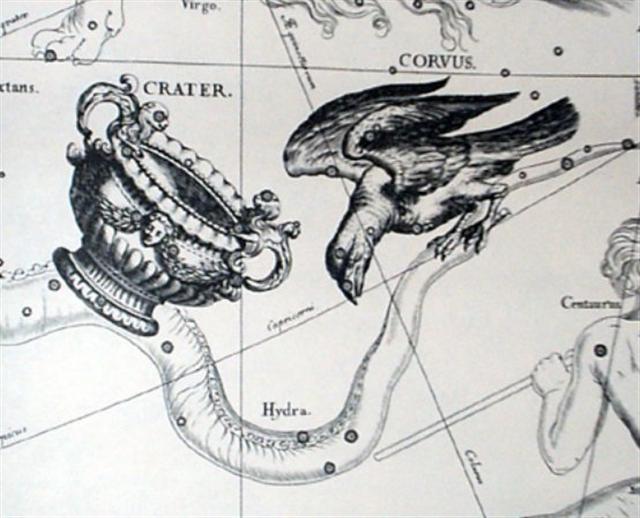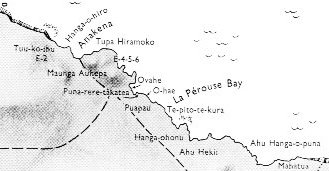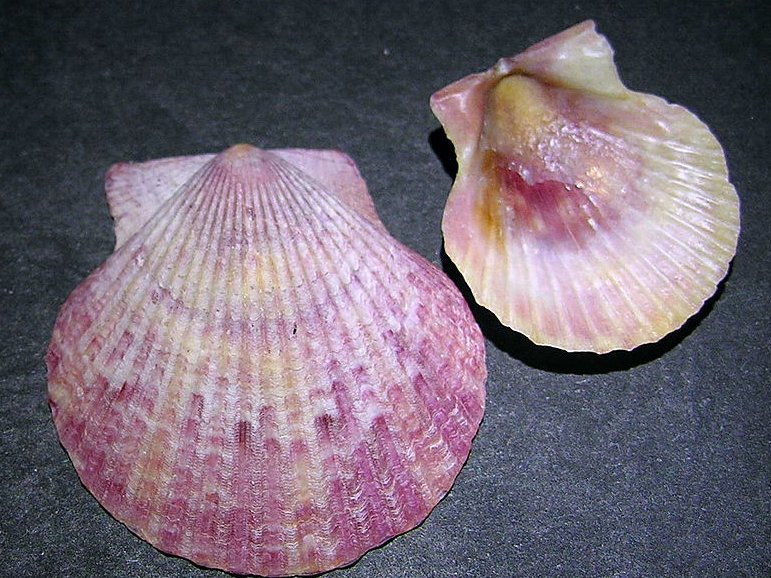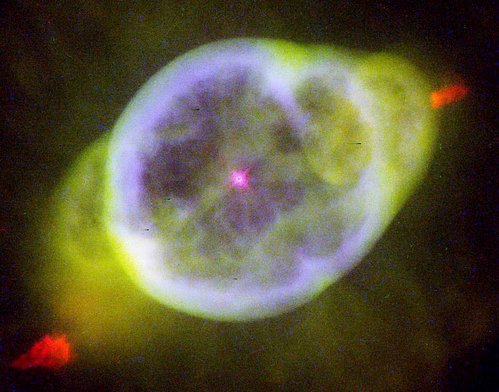372. To once again repeat: (84 + 16) + 61 = 161 (= 290 / 2 + 16), and from the Heavenly Gate (ζ Tauri,*84, at the tip of the southern horn of the Bull) to *84 + *16 + *61 = *161 at Ga4-14 (→ 41.4 as in Bharani) there were 16 + 61 = 77 days. To Rei in Ga4-17 (100) there were 80 days:
| CLOSE TO THE SUN: |
| 3-24 (71 + 12) |
3-25 (84) |
3-26 (*5) |
3-27 (450) |
| APRIL 8 (*383) |
9 (*19) |
10 (100 = 161 - 61) |
11 (466) |
 |
 |
 |
 |
| Ga1-18 (→ 4 * 29½) |
Ga1-19 |
Ga1-20 (→ 4 + 16) |
Ga1-21 |
| KHUFU |
KHAFRE |
MENKAURE |
ο Aurigae (85.8), γ Leporis (85.9)
YANG MUN (α Lupi)
|
|
MINTAKA (Belt) = δ Orionis, υ Orionis (82.4), χ Aurigae (82.5), ε Columbae (82.6)
*41 = *82.4 - *41.4 |
Al Hak'ah-3 (Brand) / Mrigashīrsha-5 (Stag's Head) / Turtle Head-20 (Monkey) / Mas-tab-ba-tur-tur (Little Twins)
ARNEB = α Leporis, Crab Nebula = M1 Tauri (83.0, φ¹ Orionis (83.1), HEKA = λ Orionis, Orion Nebula = M42 (83.2), φ² Orionis (83.6), ALNILAM (String of Pearls) = ε Orionis (83.7) |
Three Stars-21 (Gibbon) / Shur-narkabti-sha-shūtū-6 (Star in the Bull towards the south) / ANA-IVA-9 (Pillar of exit)
HEAVENLY GATE = ζ Tauri, ν Columbae (84.0), ω Orionis (84.2), ALNITAK (Girdle) = ζ Orionis, PHAKT (Phaet) = α Columbae (84.7) |
| June 11 |
12 |
13 (*84 = 100 - 16) |
14 (165) |
| °June 7 |
8 |
9 (*80) |
10 (161) |
| 'May 15 (*420) |
16 (136) |
17 |
18 (*58) |
| "May 1 (*41) |
2 |
3 |
4 (124) |
 ... The earliest depiction that has been linked to the constellation of Orion is a prehistoric (Aurignacian) mammoth ivory carving found in a cave in the Ach valley in Germany in 1979. Archaeologists have estimated it to have been fashioned approximately 32,000 to 38,000 years ago ... The artist cut, smoothed and carved one side (A) and finely notched the other side (B) and the edges. Side A contains the half-relief of an anthropoidal figure, either human or a human-feline hybrid, known as the 'adorant' because its arms are raised as if in an act of worship.

On side B together with the four edges is a series of notches that are clearly set in an intentional pattern. The edges contain a total of 39 notches in groups of 6, 13, 7 and 13. A further 49 notches on side B are arranged in four vertical lines of 13, 10, 12 and 13 respectively plus a further notch that could be in either of the middle two lines ... The grouping of the notches on the plate suggests a time-related sequence. The total number of notches (88) not only coincides with the number of days in 3 lunations (88.5) but also approximately with the number of days when the star Betelgeuse (α Ori) disappeared from view each year between its heliacal set (about 14 days before the spring equinox around 33,000 BP) and its heliacal rise (approximately 19 days before the summer solstice) ... |
| CLOSE TO THE SUN: |
64 |
| 3-28 |
3-29 (88) |
3-30 |
3-31 |
4-1 (*11) |
| APRIL 12 |
13 |
14 (104) |
15 |
16 (*26) |
 |
 |
 |
 |
 |
| Ga1-22 |
Ga1-23 |
Ga1-24 |
Ga1-25 |
Ga1-26 |
| μ Columbae, SAIPH (Sword) = κ Orionis (86.5), τ Aurigae, ζ Leporis (86.6) |
υ Aurigae (87.1), ν Aurigae (87.2), WEZN (Weight) = β Columbae, δ Leporis (87.7), TZE (Son) = λ Columbae (87.9) |
Ardra-6 (The Moist One) / ANA-VARU-8 (Pillar to sit by)
χ¹ Orionis, ξ Aurigae (88.1), BETELGEUZE = α Orionis (88.3), ξ Columbae (88.5), σ Columbae (88.7)
ZUBEN ELGENUBI (α Librae)
|
η Leporis (89.0), PRAJA-PĀTI (Lord of Created Beings) = δ Aurigae, MENKALINAN (Shoulder of the Rein-holder) = β Aurigae, MAHASHIM (Wrist) = θ Aurigae, and γ Columbae (89.3), π Aurigae (89.4), η Columbae (89.7 *48 = *89.4 - *41.4 |
μ Orionis (90.3), χ² Orionis (90.5) |
| June 15 |
16 |
17 (168) |
18 |
19 |
| °June 11 |
12 |
13 (164) |
14 |
15 (*86) |
| 'May 19 |
20 (140) |
21 |
22 |
23 (*63) |
| "May 5 |
6 |
7 (127) |
8 |
9 (*49) |
| CLOSE TO THE FULL MOON: |
| 9-27 |
9-28 |
9-29 (*192) |
9-30 (3 * 91) |
10-1 |
| OCT 12 |
13 |
14 |
15 (288) |
16 (*209) |
| MULIPHEN (Oaths) = γ Ophiuchi (269.0), BASANISMUS = G Scorpii (269.5), PHERKARD (Dim One of the Two Calves) = δ Ursae Minoris (269.9) |
PTOLEMY CLUSTER = M7 Scorpii (270.5), GRUMIUM (Lower Jaw) = ξ Draconis (270.9) |
RUKBALGETHI GENUBI (Bending Claw) = θ Herculis (271.1), ξ Herculis (271.5), ETAMIN (Head) = γ Draconis, ν Herculis (271.7), ν Ophiuchi (271.8) |
Cat's Eye = NGC6543 Draconis (272.2), ζ Serpentis (272.4), τ Ophiuchi (272.9) *231 = *272.4 - *41.4 |
Winnowing Basket-7 (Leopard)
18h (273.4)
NASH (Point) = γ Sagittarii (273.7), θ Arae (273.8) |
| Dec 15 |
16 (350) |
17 |
18 |
19 (*273) |
| °Dec 11 |
12 (346) |
LUCIA |
14 (*268) |
15 |
| 'Nov 18 |
19 |
20 (324) |
21 |
22 (*246) |
| "Nov 4 |
5 |
6 (310) |
7 |
8 (*232) |
|
... As has already been mentioned, the Delphians worshipped Dionysus once a year as the new-born child, Liknites, 'the Child in the Harvest Basket', which was a shovel-shaped basket of rush and osier used as a harvest basket, a cradle, a manger, and a winnowing-fan for tossing the grain up into the air against the wind, to separate it from the chaff. The worship of the Divine Child was established in Minoan Crete, its most famous early home in Europe. In 1903, on the site of the temple of Dictaean Zeues - the Zeus who was yearly born in Rhea's cave at Dicte near Cnossos, where Pythagoras spent 'thrice nine hallowed days' [27] of his initiation - was found a Greek hymn which seems to preserve the original Minoan formula in which the gypsum-powdered, sword-dancing Curetes, or tutors, saluted the Child at his birthday feast. In it he is hailed as 'the Cronian one' who comes yearly to Dicte mounted on a sow and escorted by a spirit-throng, and begged for peace and plenty as a reward for their joyful leaps ...

|
| CLOSE TO THE SUN: |
| 6-9 |
6-10 (61 + 100) |
6-11 |
6-12 |
| ST JOHN'S DAY |
JUNE 25 (84 + 92) |
26 (6 * 29½ = 177) |
27 |
 |
 |
 |
 |
| Ga4-12 (95) |
→ 14 * 29½ |
Ga4-14 (20 + 77) |
Ga4-15 |
| p Carinae (159.3) |
φ Hydrae (160.3) |
no star listed (161) |
VATHORZ POSTERIOR = θ Carinae (162.1), PEREGRINI = μ Velorum, η Carinae (162.6) |
| "July 17 |
He Anakena 18 |
19 (184 + 16) |
20 |
| Hanga Takaure |
Hanga Hoonu |
|
... They made camp and rested at the Bay of Flies for a week (etahi pohitu). On the eighteenth day of the month of July (Anakena) they went on from Hanga Takaure. They climbed uphill, went on, and reached Poike ...
.jpg)
... From a religious point of view, the high regard for flies, whose increase or reduction causes a similar increase or reduction in the size of the human population, is interesting, even more so because swarms of flies are often a real nuisance on Easter Island, something most visitors have commented on in vivid language. The explanation seems to be that there is a parallel relationship between flies and human souls, in this case, the souls of the unborn. There is a widespread belief throughout Polynesia that insects are the embodiment of numinous beings, such as gods or the spirits of the dead, and this concept extends into Southeast Asia, where insects are seen as the embodiment of the soul ...
... Men's spirits were thought to dwell in the Milky Way between incarnations. This conception has been handed down as an Orphic and Pythagorean tradition fitting into the frame of the migration of the soul. Macrobius, who has provided the broadest report on the matter, has it that souls ascend by way of Capricorn, and then, in order to be reborn, descend again through the 'Gate of Cancer' ...
... Clearly we need to take these 16 nights of invisibility into serious consideration when reading the G text. Rei in Ga1-30 is in the middle between Maru-sha-pu-u-mash-mashu (Front of the Mouth of the Twins, η Gemini) and Arkū-sha-pu-u-mash-mashu (Back of the Mouth of the Twins, μ Gemini) ...

|
| CLOSE TO THE SUN: |
| 6-13 (164) |
6-14 (180 - 15) |
6-15 |
6-16 |
| JUNE 28 |
29 (180) |
RANGI MEAMEA |
JULY 1 (*102) |
 |
 |
 |
 |
| Ga4-16 |
Ga4-17 (20 + 80) |
Ga4-18 |
Ga4-19 |
| ν Hydrae (163.1) |
no star listed (164)
ALTAIR (α Aquilae)
|
Wings-27 (Snake)
η Oct. (165.4), ALKES (Shallow Basin) = α Crateris (165.6)
*124 = *165.4 - *41.4 |
ANA-TIPU-4 (Upper-side-pillar - where the guards stood) MERAK (Loin) = β Ursae Majoris (166.2), DUBHE (Bear) = α Ursae Majoris (166.7) |
 |
| Aug 31 |
Sept 1 |
2 (*165) |
3 (246) |
| °Aug 27 |
28 |
29 (*161) |
30 (242) |
| 'Aug 4 (216) |
5 (*137) |
6 |
7 |
| "July 21 |
22 / 7 → π |
He Anakena 23 (204) |
24 (*125) |
| Hanga Hoonu |
Oromanga |
|
... Everywhere the dream soul looked around for a residence for the king. The dream soul went to Maunga Teatea and gave him the name Maunga Teatea A Hau Maka O Hiva. The dream soul of Hau Maka looked around. From Maunga Teatea she looked to Rangi Meamea (i.e., Ovahe).

The dream soul spoke the following: There it is - ho! - the place - ho! - for the king - ho! - to live (there in the future), for this is (indeed) Rangi Meamea ...
... The Explorers arrived at Rangi Meamea in "July 23 (Anakena 23) and there they stayed on the beautiful beach of Oromanga for 27 days ...
... When Hotu's canoe had reached Taharoa, the vaginal fluid (of Hotu's pregnant wife) appeared. They sailed towards Hanga Hoonu [Bay of Turtles], where the mucus (kovare seems to refer to the amniotic sac in this case) appeared. They sailed on and came to Rangi Meamea, where the amniotic fluid ran out and the conctractions began. They anchored the canoe in the front part of the bay, in Hanga Rau. The canoe of Ava Rei Pua also arrived and anchoraged. After Hotu's canoe had anchoraged, the child of Vakai and Hotu appeared. It was Tuu Maheke, son of Hotu, a boy. After the canoe of Ava Rei Pua had also arrived and anchoraged, the child of Ava Rei Pua was born. It was a girl named Ava Rei Pua Poki ... |
| CLOSE TO THE FULL MOON: |
| 12-13 |
12-14 (348) |
12-15 |
12-16 (365 - 15) |
| DEC 28 |
29 |
30 (364) |
31 (*285) |
| ι Cephei (346.0), λ Aquarii, γ Piscis Austrini, σ Pegasi (346.5) |
SCHEAT AQUARII = δ Aquarii (347.0), ρ Pegasi (347.2), δ Piscis Austrini (347.4), FOMALHAUT (Mouth of the Fish) = α Piscis Austrini, τ Gruis (347.8)
*306 = *347.4 - *41.4 |
FUM AL SAMAKAH (Mouth of the Fish) = β Piscium (348.3), ζ Gruis (348.5), ο Andromedae (348.9) |
Al Fargh al Mukdim-24 (Fore Spout) / Purva Bhādrapadā-26 (First of the Blessed Feet) / House-13 (Pig)
SCHEAT PEGASI = β Pegasi, π Piscis Austrini (349.3), κ Gruis (349.4), MARKAB PEGASI = α Pegasi (349.5)
*308 = *349.4 - *41.4 |
 |
| March 2 |
3 |
4 (*348) |
5 (64) |
| °Febr 26 |
27 |
28 (*344) |
°March 1 (60) |
| 'Febr 3 |
4 |
5 (36) |
6 (*322) |
| "Jan 20 |
21 |
22 |
23 (*308) |
... A man had a daughter who possessed a wonderful bow and arrow, with which she was able to bring down everything she wanted. But she was lazy and was constantly sleeping. At this her father was angry and said: 'Do not be always sleeping, but take thy bow and shoot at the navel of the ocean, so that we may get fire.' The navel of the ocean was a vast whirlpool in which sticks for making fire by friction were drifting about. At that time men were still without fire. Now the maiden seized her bow, shot into the navel of the ocean, and the material for fire-rubbing sprang ashore. Then the old man was glad. He kindled a large fire, and as he wanted to keep it to himself, he built a house with a door which snapped up and down like jaws and killed everybody that wanted to get in. But the people knew that he was in possession of fire, and the stag determined to steal it for them. He took resinous wood, split it and stuck the splinters in his hair. Then he lashed two boats together, covered them with planks, danced and sang on them, and so he came to the old man's house. He sang: 'O, I go and will fetch the fire.' The old man's daughter heard him singing, and said to her father: 'O, let the stranger come into the house; he sings and dances so beautifully.' The stag landed and drew near the door, singing and dancing, and at the same time sprang to the door and made as if he wanted to enter the house. Then the door snapped to, without however touching him. But while it was again opening, he sprang quickly into the house. Here he seated himself at the fire, as if he wanted to dry himself, and continued singing. At the same time he let his head bend forward over the fire, so that he became quite sooty, and at last the splinters in his hair took fire. Then he sprang out, ran off and brought the fire to the people ...

The empty shallow vessel is here raised up in expectation. Alkes had been at Rangi Meamea in JUNE 30 where at the time of the Bull the Sun would have reached Sirius. Caspar carried an open shell under a star with 8 horns:


... The son of Zebedee and Salome, James is styled 'the Greater' to distinguish him from the Apostle James 'the Less', who was probably shorter of stature. We know nothing of St. James's early life. He was the brother of John, the beloved disciple, and probably the elder of the two ... James' emblem was the scallop shell (or 'cockle shell'), and pilgrims to his shrine often wore that symbol on their hats or clothes. The French for a scallop is coquille St. Jacques, which means 'cockle (or mollusk) of St. James'. The German word for a scallop is Jakobsmuschel, which means 'mussel (or clam) of St. James'; the Dutch word is Jacobsschelp, meaning 'shell of St. James' ... The scallop shell is represented in the decoration of churches named after St. James, such as in St James' Church, Sydney, where it appears in a number of places, including in the mosaics on the floor of the chancel.

When referring to St James, the scallop shell is represented with convex perspective. Referring to Venus the perspective is concave ... The date to celebrate St James (the Great) was July 25 in Western Christianity, April 30 in Eastern Christianity, and December 30 in the Hispanic Church. On the other hand, St John (the apostle) was celebrated in December 27 according to all these church traditions. St George, who died in April 23 in the year 303 AD, was celebrated in April 23 ...
|
Hotu. Ta.: hotu, to produce fruit, Sa.: fotu, id. Mgv.: akahotu, the September season. Churchill. H.: Hoku, Night of the full moon. When this moon set before daylight it was called Hoku Palemo, Hoku that slips away. When it set after daylight it was called Hoku Ili, grounded Hoku. Ka mahina o Hoku, the full moon of the night Hoku. Cf. hōkū, star. Hō kū, star. (PPN fetu'u). Wehewehe.
... When this tremendous task had been accomplished Atea took a third husband, Fa'a-hotu, Make Fruitful. Then occurred a curious event. Whether Atea had wearied of bringing forth offspring we are not told, but certain it is that Atea and her husband Fa'a-hotu exchanged sexes. Then the [male] eyes of Atea glanced down at those of his wife Hotu and they begat Ru. It was this Ru who explored the whole earth and divided it into north, south, east, and west ... |
... Raven began to search for the girls. For it is the way of things in the world that there are both males and females of every creature. Somewhere there must be girls. Raven searched and searched. Under logs and behind rocks, he looked. But he could not find the hiding place of the first girls. But as he searched, the tide was going out, and as it reached its lowest, the Raven spotted some giant Chitons clinging to the rocks. These giant shell fish had but one shell, fastened tightly to the rocks with huge soft lips around their edges. Raven pried one loose with his beak. And there inside was a girl. He pried off another, and another, and another in each was a girl. They were very similar to the creatures he had found in the clamshell, but more like the Chiton, softer and rounder, in contrast to the hard shell and strong muscles of the clam. And these were just as frightened of the Raven. He gathered them onto his back with difficulty, and brought them to the boys he had found in the clamshell ...

|
















.jpg)









